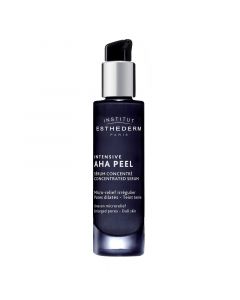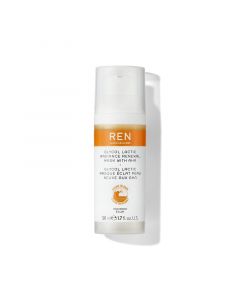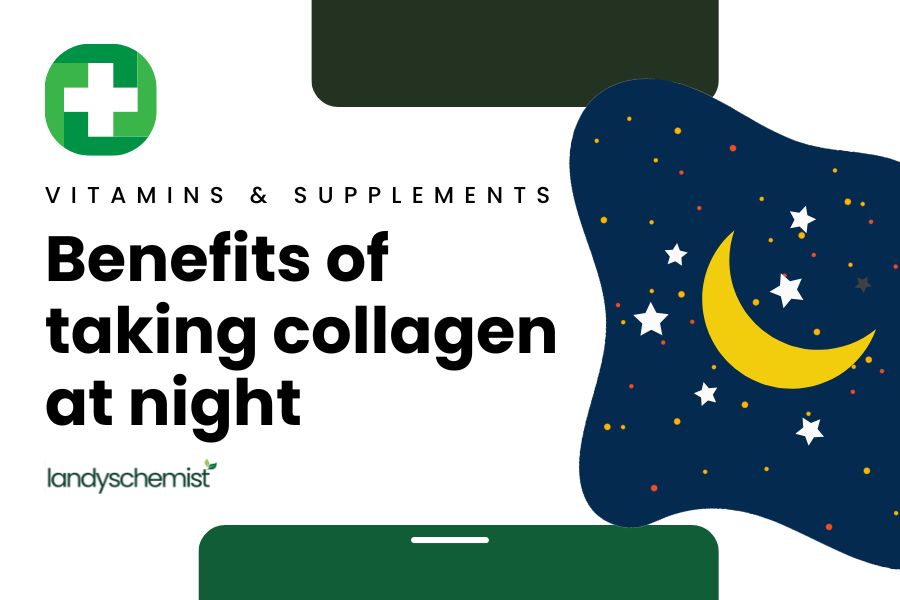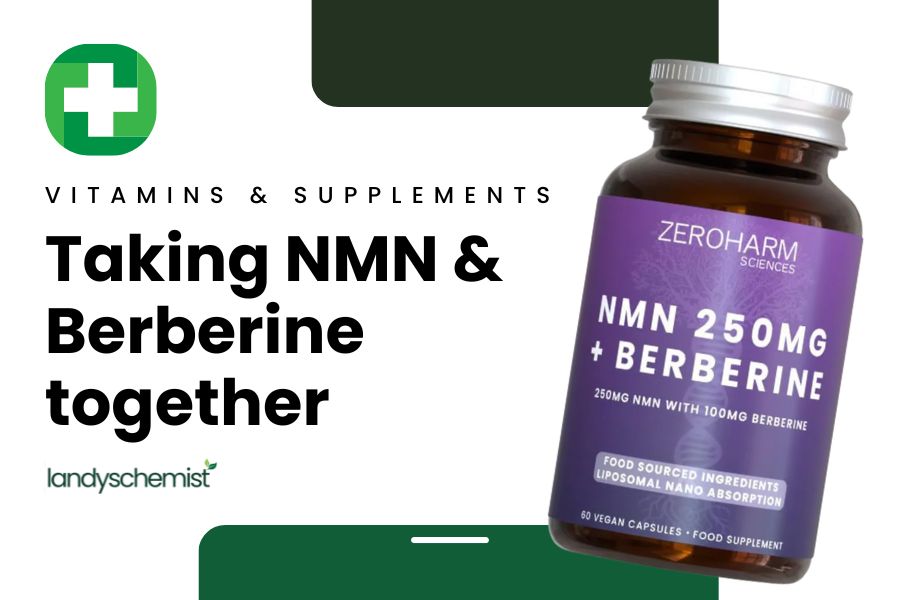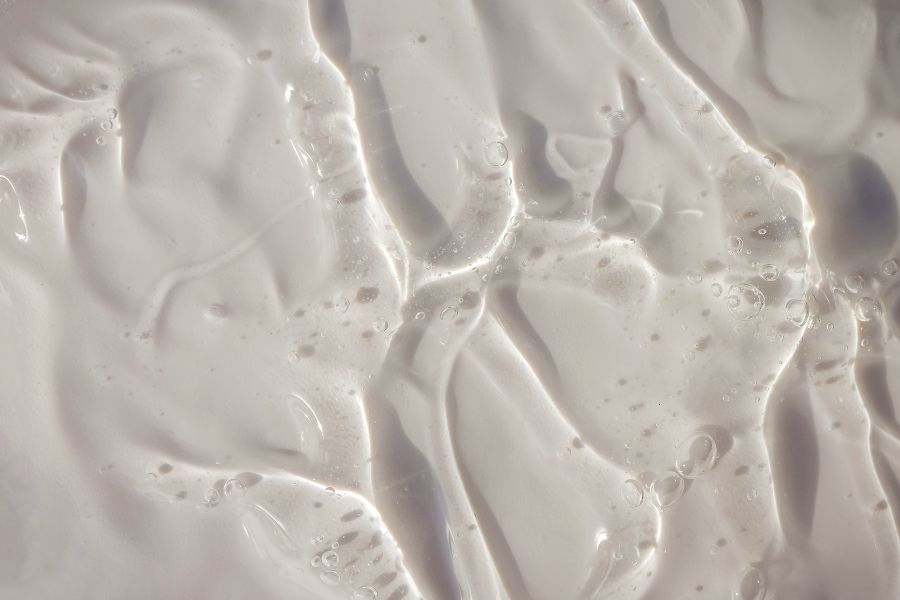
The Skincare Ingredients Guide: Glycolic Acid
Glycolic acid is renowned for its remarkable exfoliating properties and ability to promote smoother, more radiant skin, this powerhouse ingredient has become a staple in many skincare routines. Discover why glycolic acid has captured the attention of skincare enthusiasts and how it can potentially transform your complexion in this complete guide.
What Is Glycolic Acid?
Glycolic acid is a type of chemical exfoliant commonly used in skincare products. It is derived from natural sources, sugar cane being the most common, and belongs to a group of water-soluble acids called alpha-hydroxy acids (AHAs). A group of acids that work on the surface of the epidermis (top layer of the skin). Glycolic acid also has the lowest molecular weight out of this group of AHAs, meaning it can easily penetrate the skin.
How Glycolic Acid works in the skin
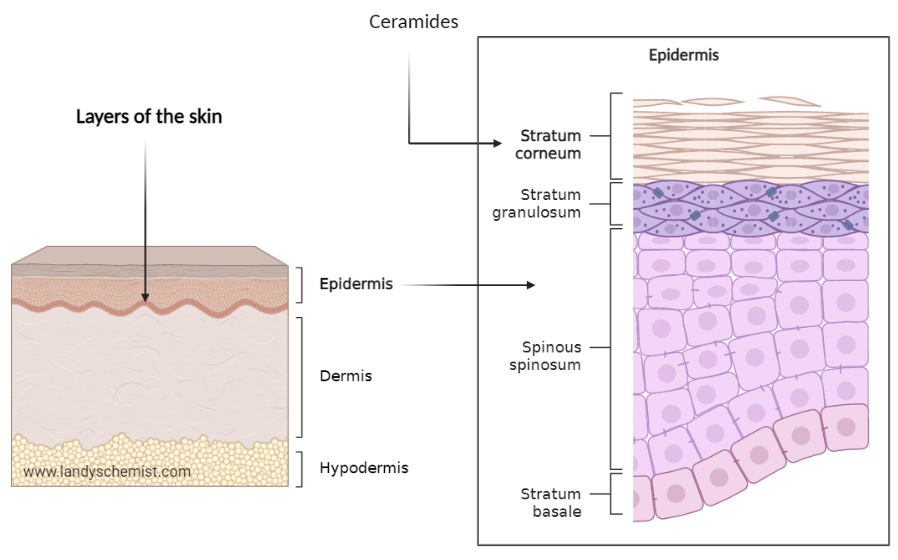
In low concentrations of 2% - 5%, Glycolic acid works by exfoliating the top layer of our epidermis, called the stratum corneum. Once absorbed, glycolic acid acts as a chemical exfoliant, weakening the bonds between dead skin cells helping to remove the build-up of dead skin cells on the surface of the skin, allowing for a smoother, brighter complexion.
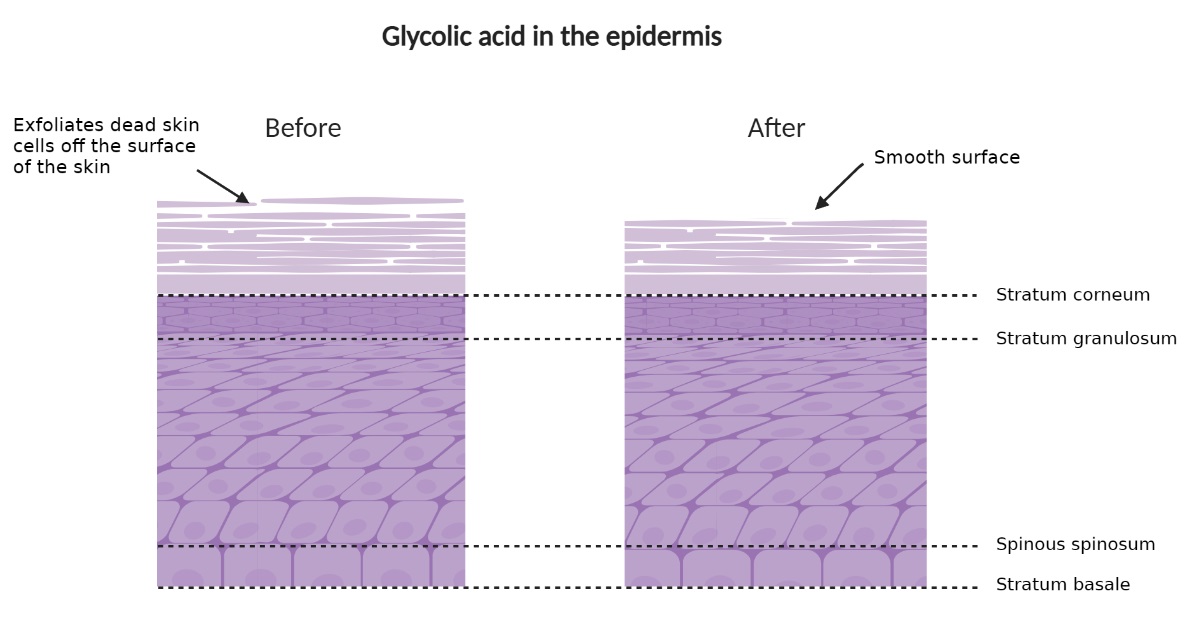
Lower concentrations on glycolic acid are found in most skincare products to avoid risks of irritation. The concentration and pH level of the glycolic acid product determine its effectiveness and potential for skin irritation. It's important to start with lower concentrations and gradually increase usage as your skin adapts to the skincare ingredient. Additionally, it's advisable to use sunscreen after glycolic acid use, as it can increase sun sensitivity.
Glycolic Acid in the dermis
Glycolic acid can have the potential to reach the dermis (layer beneath the epidermis) due to its small molecular size, but this depends on several factors. The key factors include:
- Concentration: Higher concentrations and lower pH formulations of glycolic acid are more likely to reach the dermis. The lower the pH, the higher the acidity and intensity of the glycolic acid.
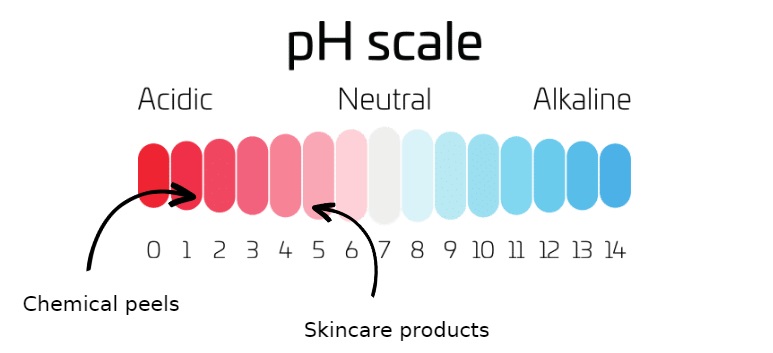
- Duration of contact: The length of time the glycolic acid product or treatment remains in contact with the skin can impact penetration. Prolonged contact increases the chances of deeper penetration into the dermis.
- Skin Integrity: The condition of the skin plays a role in glycolic acid penetration. Skin that is compromised due to wounds, cuts, or excessive dryness may allow for increased penetration of glycolic acid. However, this can also compromise the skin’s barrier by adding further irritation.
- Formulation: The type of glycolic acid product affects its ability to penetrate. Different delivery systems, such as creams, gels, or serums, can impact the absorption and penetration of the active ingredient.
Glycolic acid peels and physician-strength treatments tend to have a higher concentration and lower molecular weight then other skincare products, which enable them to penetrate into the dermis.
Glycolic acid in skincare
Glycolic acid can be found in cleansers, toners, moisturisers, serums, and face masks and peels, to improve skin texture, radiance, reduce fine lines and wrinkles, and minimise the appearance of dark spots. The typical pH level in skincare is around 5.5 to 6.5, slightly acidic to neutral, making it gentle enough for most skin types without compromising the skin’s barrier (stratum corneum).
Key Benefits of Glycolic acid
1. Smooth, bright skin:
Glycolic acid is an effective exfoliant that helps remove dead skin cells from the surface of the skin and increase cell turnover. This promotes a smoother, brighter complexion and can help reduce the appearance of fine lines, wrinkles, and uneven skin tone and texture.
2. Hyperpigmentation and dark spots:
Regular use of glycolic acid can help fade discolouration and post-inflammatory hyperpigmentation, such as dark spots, acne scars, and age spots.
3. Collagen Stimulation:
Glycolic acid at higher concentrations and lower pH levels, can stimulate collagen synthesis in the dermis. The exfoliation and cell turnover promoted by glycolic acid can signal the skin to produce new collagen fibers, leading to improved skin structure and appearance.
4. Enhanced Product Absorption:
The exfoliating properties of glycolic acid can improve the absorption of other skincare products, such as serums or moisturizers. By removing the build-up of dead skin cells, glycolic acid allows subsequent products to penetrate more effectively.
5. Acne Treatment:
Glycolic acid is commonly used in acne treatments due to its exfoliating and anti-inflammatory properties. It helps unclog pores, reduce the formation of comedones (blackheads and whiteheads), and control excess oil production.
6. Minimisation of Fine Lines and Wrinkles:
With regular use, glycolic acid can help minimize the appearance of fine lines and wrinkles by promoting cell turnover, improving skin texture, and stimulating collagen production.
How to use
Depending on the type of glycolic acid product and formulation you are using, directions for use will vary. If you have sensitive skin, it is worth doing a small patch test, or slowly incorporating it into your skincare routine. Glycolic acid toners and serums, which tend to have slightly stronger concentrations, should be used 2-3 times a week until your skin begins to adjust.
As glycolic acid is an exfoliator, it increases the skin's sensitivity to the sun, so it is important to apply sunscreen during the day. You can use glycolic acid treatments in the evening only to avoid this.
How long does glycolic acid take to work?
Concentration, frequency of use, and skin type are some of the factors that influence how long it takes to see results. Generally, improvements are visible within just a few weeks of regular use. Soft, smooth, and radiant skin are a few of the first noticeable results you can expect to notice on your skin. It may take longer to notice results with concerns like fine lines and winkles, and hyperpigmentation.
Skincare ingredients that work well with glycolic acid
There are several skincare ingredients that compliment glycolic acid including:
- Hyaluronic acid: a humectant that improves moisture retention and hydration in the skin. When used alongside glycolic acid, it can counteract the risk of dryness and irritation and support the improvement of the skin's overall appearance.
- Niacinamide: a soothing and brightening skincare ingredient that can help to reduce redness and hyperpigmentation to improve overall skin tone. Niacinamide can soothe the skin from the exfoliation action of glycolic acid, complimenting each other in achieving an even complexion.
- Ceramides: work to repair and strengthen a damaged stratum corneum (skin’s barrier), which compliments the exfoliating action of glycolic acid for hydrated, smooth skin.
Skincare ingredients to avoid mixing with glycolic acid
There are several skincare ingredients that have the potential to cause irritation when used alongside glycolic acid, including:
- Benzoyl Peroxide: an acne treatment that can be irritating and drying on the skin. When layered with glycolic acid, this can increase skin irritation, redness and cause excessive dryness.
- Salicylic acid and other beta hydroxy acids (BHAs): BHAs are also chemical exfoliants commonly used for acne and pore-clearing purposes. Combining BHA’s like salicylic acid with glycolic acid can cause over-exfoliation, leading to a damaged skin barrier.
- Retinol/Retinoids: Both retinol and glycolic acid have strong exfoliating action that speeds up cell renewal with the potential to cause signs of irritation and dryness.
You can still use these skincare ingredients alongside glycolic acid, but at separate times of the day, or by creating a separate routine which you can alternate between every few days.
Recommendations
Esthederm Intensive AHA Peel contains glycolic acid, helping to remove dead skin cells, unclog pores, and improve skin texture. By promoting cellular turnover, this product helps to reveal a smoother, brighter complexion and can assist in reducing the appearance of fine lines, wrinkles, and hyperpigmentation.
The REN Glycolactic Radiance Renewal Mask contains glycolic acid as a key ingredient to help exfoliate the skin and promote cellular turnover. This mask helps to improve skin texture, reduce the appearance of fine lines and wrinkles, and enhance overall radiance by gently removing dead skin cells and revealing a smoother, brighter complexion.
Summary
- Glycolic acid is a versatile skincare ingredient that offers multiple benefits. It effectively exfoliates the skin, promoting cell turnover and revealing a smoother, brighter complexion. It can also improve skin texture, fade discoloration, and minimize the appearance of fine lines and wrinkles.
- In addition to its exfoliating properties, glycolic acid has the potential to stimulate collagen synthesis in the dermis. Higher concentrations and lower pH levels increase its ability to promote collagen production, resulting in improved skin elasticity and firmness.
- When incorporating glycolic acid into your skincare routine, it's important to consider factors such as concentration, pH level, and skin sensitivity. Consulting with a dermatologist or skincare professional can help determine the most suitable glycolic acid products and formulations for your specific needs, ensuring safe and effective use.
By Rhysa Phommachanh, BA (Hons) Specialist Skincare and Media Make Up

